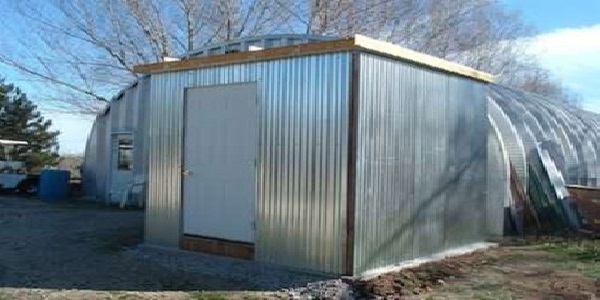Surviving in the heat: Must-have items to keep cool in a collapse
10/26/2018 / By Jhoanna Robinson

During the summer months, blackouts may be experienced in some parts of the country – they may be planned or unplanned. Severe weather disturbances are even bigger reasons to be geared for the troubles that weather-related outages may bring.
Survivalists, even beginners – but mostly the hardcore ones – may already have in their possession a list of items that can benefit them in this time of need. Included here are five things that a person might need to cool off during a hot summer blackout.
- Golf cart batteries – Golf cart batteries can power items for far longer than car batteries can. Both batteries have the same size, but the former can provide longer hours of use for refrigerators, medical machines, and fans. If you’re going to charge cell phones and appliances using a 120-volt outlet, it is advisable to use an inverter. Golf cart batteries can also power well pumps so that clean water will be on hand for drinking, cooking, cleaning, and bathing. Having two or more golf cart batteries at your disposal can work wonders for you.
- Ration protector – Although humans can live for up to three days before symptoms of malnutrition transpire, taking stock of plenty of food is still the way to go for ultimate survival. Sealed bags are a go-to item for making ready-to-eat meals. These bags can store a wide variety of food items such as dried fruits, crackers, cereals, nuts, among others. Look for products that are free of BPA (bisphenol A), which is an industrial chemical that has been used to make plastic. You will want bags in several sizes such as three, four, or five millimeters that can store sharp foods. Boil-able bags that can be used without the foods stored in them losing their food quality and shape are helpful so look for this feature too. An example of these are resealable zipper bags and those with tear notches for meat and dairy products such as jerky and cheese, respectively.
- Mini-fan with misting system – A portable mini-fan is good for those times when you’re feeling hot and you’d rather not waste the resources of batteries and generators. Look for mini-fans with a built-in mister. Lithium battery-powered units are longer-lasting and better-performing than those with alkaline batteries. Don’t make use of the misting option too often to conserve water supplies.
- Two-season tent – During blackouts, houses heat up almost as easily as cars do. Opening the windows can only invite hot air inside. In times like these, stringing up a two-season tent under a nearby tree is a treat. The spring and summer version of the tent makes for a good hangout place especially when it has a ventilation screen to keep bugs out and let breezes in.
- Backpacks with bladders – Backpacks with bladders are excellent for storing batteries, flashlights, lightweight clothes, and wicks. Fill your water bladder with fresh water or ice as soon as the blackout starts to keep the water cold and the ice frozen for as long as possible.
Extreme heat and how it negatively impacts the body
Extreme heat resulted in 7,415 heat-related fatalities in the U.S. between 1999 and 2010. This is because you can become sick if your body can’t adjust to the high temperature and cool itself off.
The factors that mostly affect your body’s capability to cool itself off during extreme heat are:
- High humidity – When there is high humidity, there is a possibility that sweat won’t evaporate easily, and this can keep your body from releasing heat as fast as it needs to;
- Personal considerations – Fever, dehydration, heart disease, mental illness, prescription drug and alcohol use, age, obesity, poor circulation, and sunburn, are some of the things that can affect whether a person can easily cool their body off or not.
For more stories regarding how to survive in the wilderness, how to survive in an emergency situation, or even how to survive a zombie apocalypse, visit Preparedness.news
Sponsored solution from CWC Labs: This heavy metals test kit allows you to test almost anything for 20+ heavy metals and nutritive minerals, including lead, mercury, arsenic, cadmium, aluminum and more. You can test your own hair, vitamins, well water, garden soil, superfoods, pet hair, beverages and other samples (no blood or urine). ISO accredited laboratory using ICP-MS (mass spec) analysis with parts per billion sensitivity. Learn more here.
Sources include:
Tagged Under: backpacks, batteries, bug out, camping, clean water, Collapse, cooling system, disaster, extreme heat, off grid, portable mini-fan, Power Outage, preparedness, prepper, prepping, SHTF, summer blackouts, survival gear, Survival Tips, survivalist, two-season tent, ventilation




















